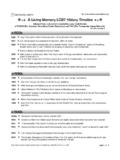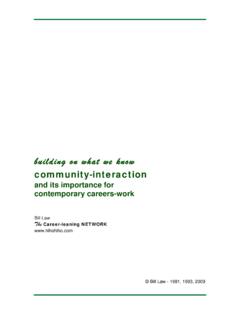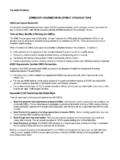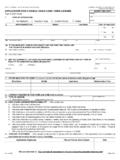Transcription of LGBTQ HOMELESS YOUTH FACT SHEET - …
1 LGBTQ HOMELESS YOUTH FACT SHEET LGBTQ stands for lesbian, gay, bisexual, transgender and questioning. HOMELESS YOUTH are typically defined as unaccompanied YOUTH aged 12 to 24 years. The National Alliance to End Homelessness typology of HOMELESS YOUTH includes four major categories: runaway (fleeing YOUTH ), transitory or episodic (couch surfing YOUTH ), unaccompanied HOMELESS YOUTH (shelter hoppers), and street-dependent YOUTH (squatters and travelers). In 1999, the Second National Incidence Study of Missing, Abducted, Runaway and Thrownaway Children (NISMART II) was published.
2 The study determined that million adolescents experienced at least one episode of homelessness each year. Seven different studies of HOMELESS YOUTH in the have concluded that approximately 20 percent of HOMELESS YOUTH are LGBTQ . This is disproportionately high when compared to the 10 percent of LGBTQ YOUTH in the general population. YOUTH consistently report severe family conflict as the primary reason for their homelessness. LGBTQ YOUTH report double the rates of sexual abuse before age 12. The major reasons HOMELESS YOUTH cite for remaining HOMELESS include lack of affordable housing options, incomplete education, inaccessible job market, and on-going drug use.
3 Demographically, LGBTQ HOMELESS YOUTH are disproportionately African American or American Indian, and often from low-income communities, and from poor or working class families. Studies indicate that once HOMELESS , LGBTQ YOUTH are at higher risk for victimization and suffer higher incidents of mental health problems and unsafe sexual behavior than straight HOMELESS YOUTH . They experience an average of more acts of sexual violence toward them than their heterosexual peers and are more likely to attempt suicide (62 percent) than their heterosexual HOMELESS peers (29 percent).
4 Discharge and emancipation from foster care is a big contributor to YOUTH homelessness. Studies show that 12 to 36 percent of emancipated foster care YOUTH will report being HOMELESS at least once after discharge from care. A national shortage of YOUTH shelters and housing programs result in many YOUTH being denied assistance. Increased appropriations for Runaway and HOMELESS YOUTH Act programs from $103 to $140 million would help alleviate this problem by offering 7,000 more YOUTH residential services and 200,000 HOMELESS YOUTH crisis intervention.
5 Several intervention models for HOMELESS YOUTH have proven effective, including early intervention and prevention services, intensive case management services coupled with shelter or drop-in centers, and YOUTH housing models with supportive services. The National Alliance to End Homelessness is a nonpartisan, mission-driven organization committed to preventing and ending homelessness in the United States. The Alliance analyzes policy and develops pragmatic, cost-effective policy solutions. Working collaboratively with the public, private, and nonprofit sectors to build state and local capacity, the Alliance provides data and research that lead to stronger programs and policies that help communities achieve their goal of ending homelessness.
6 For more information on The National Alliance to End Homelessness, visit: Published with permission by Safe Schools Coalition at.









